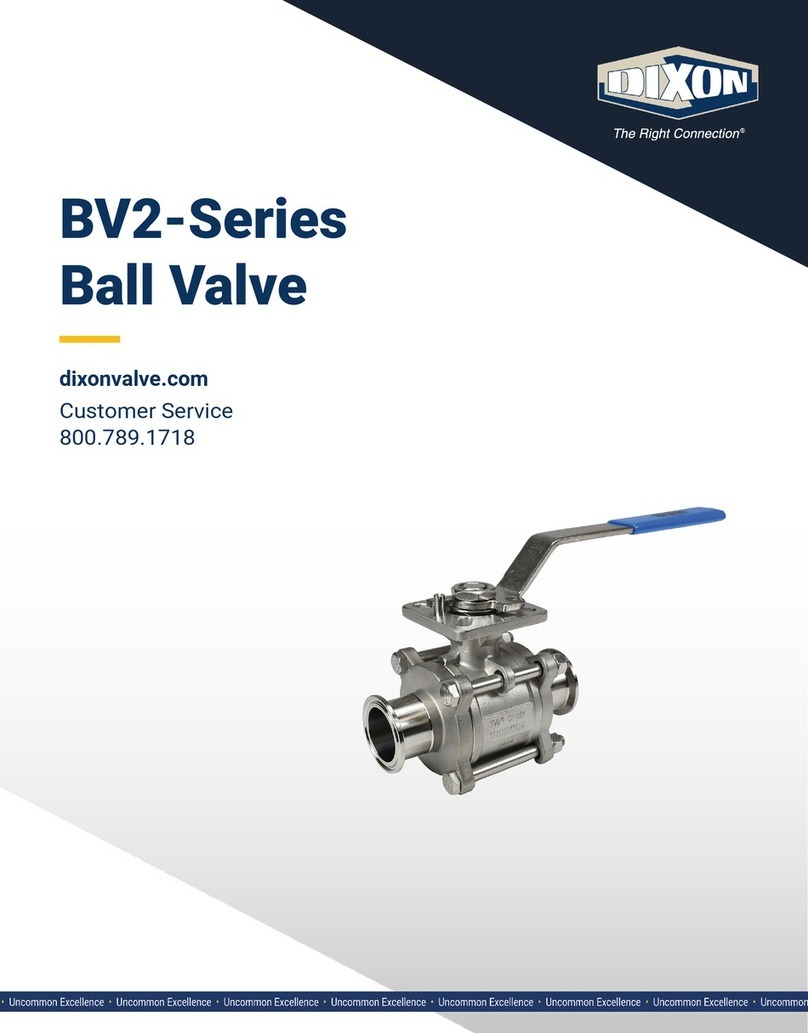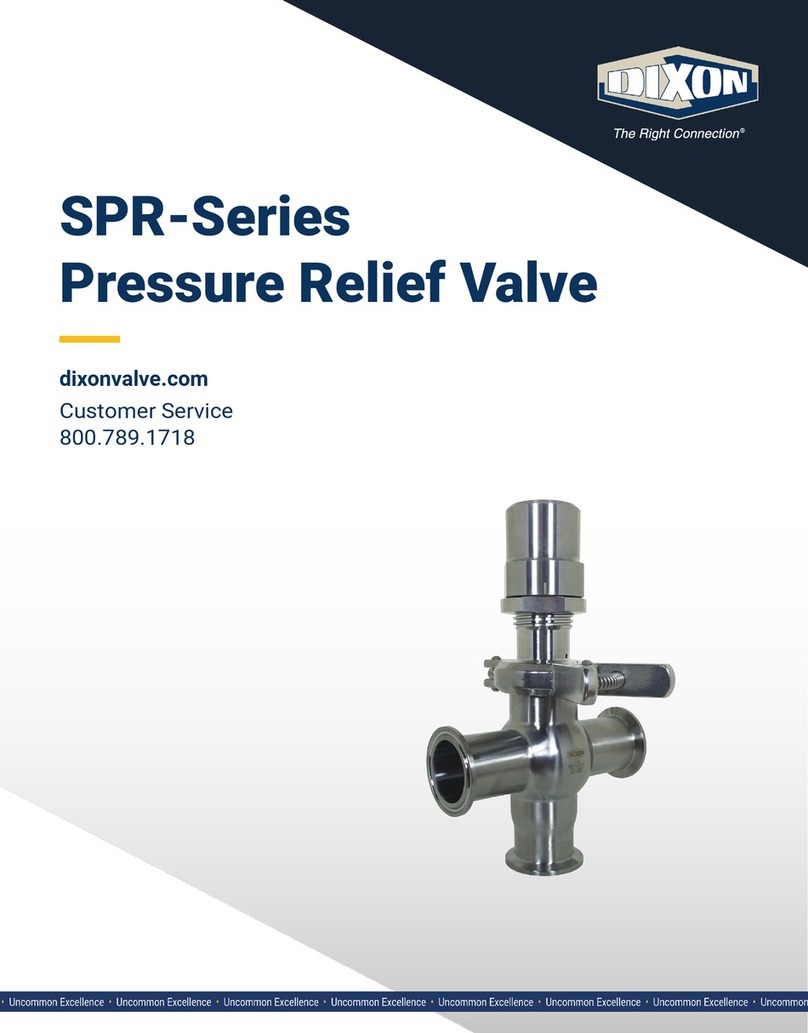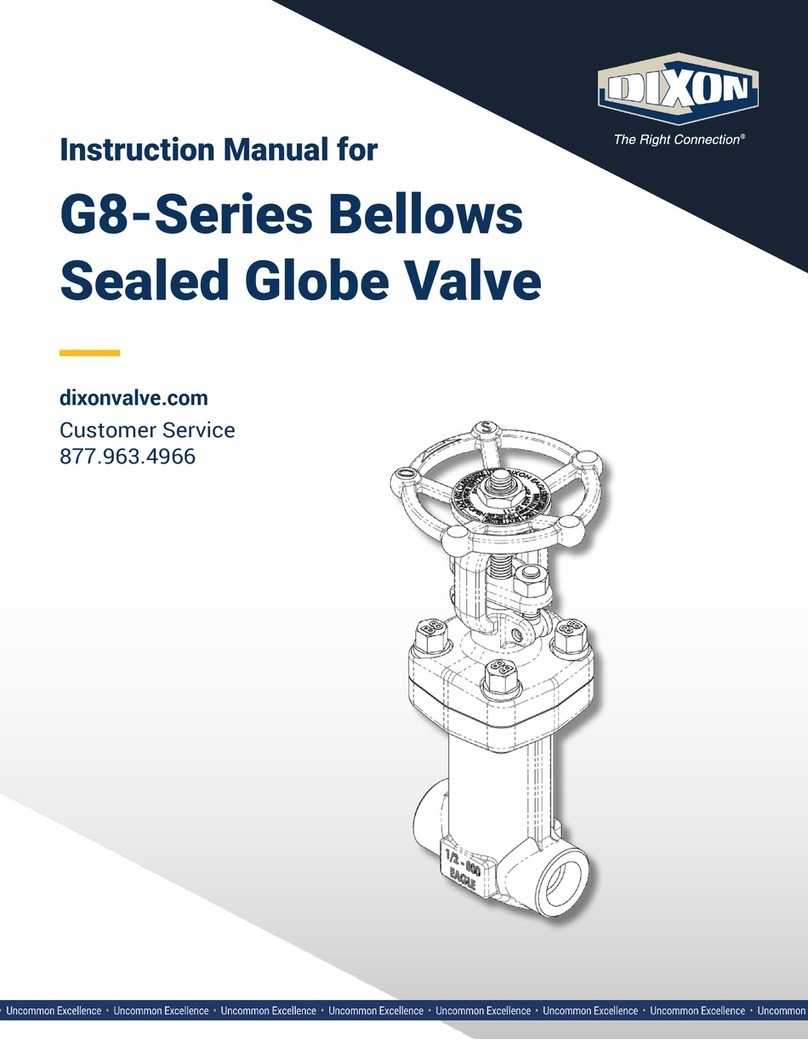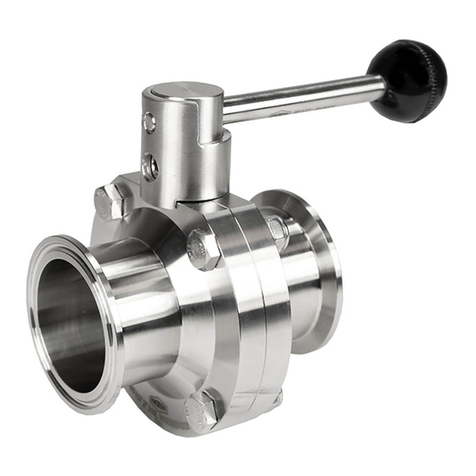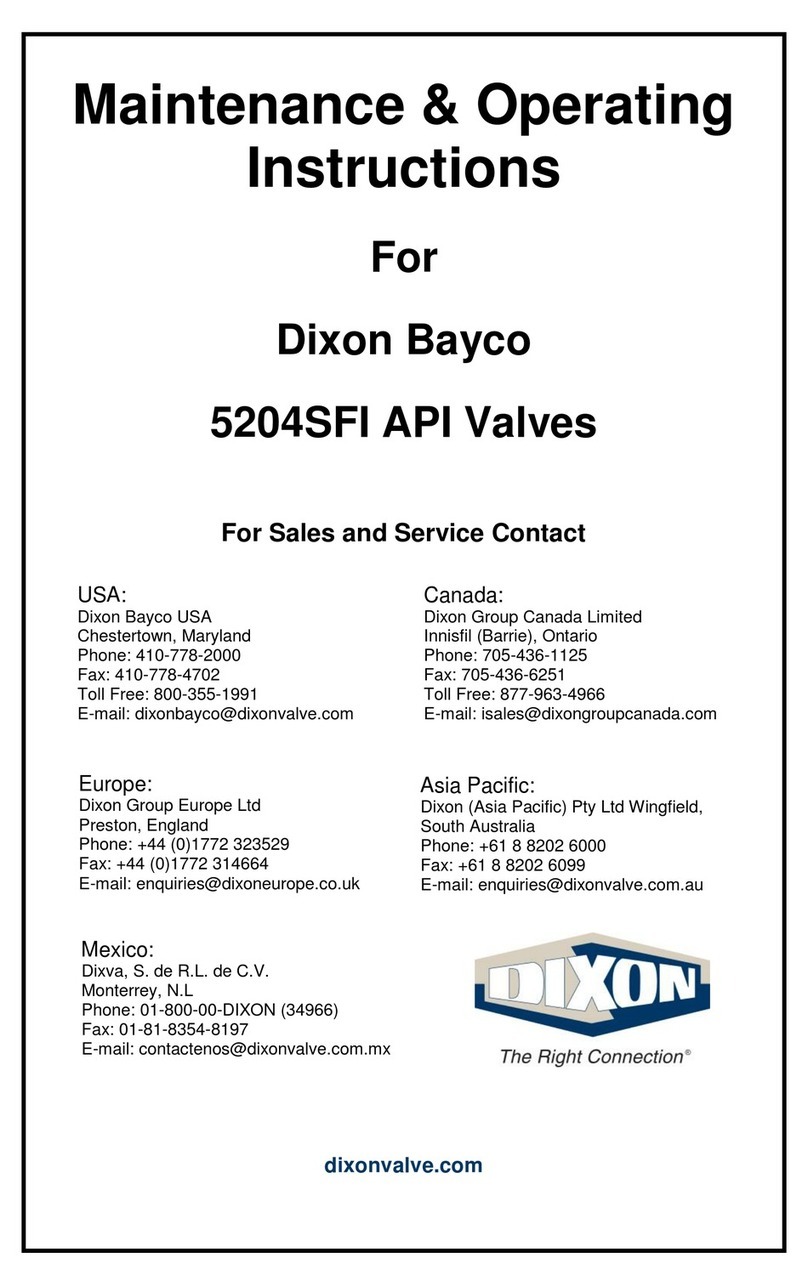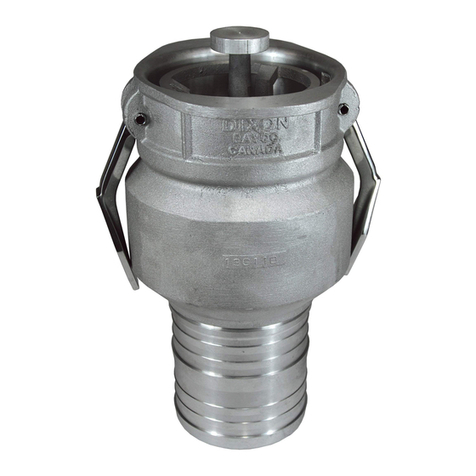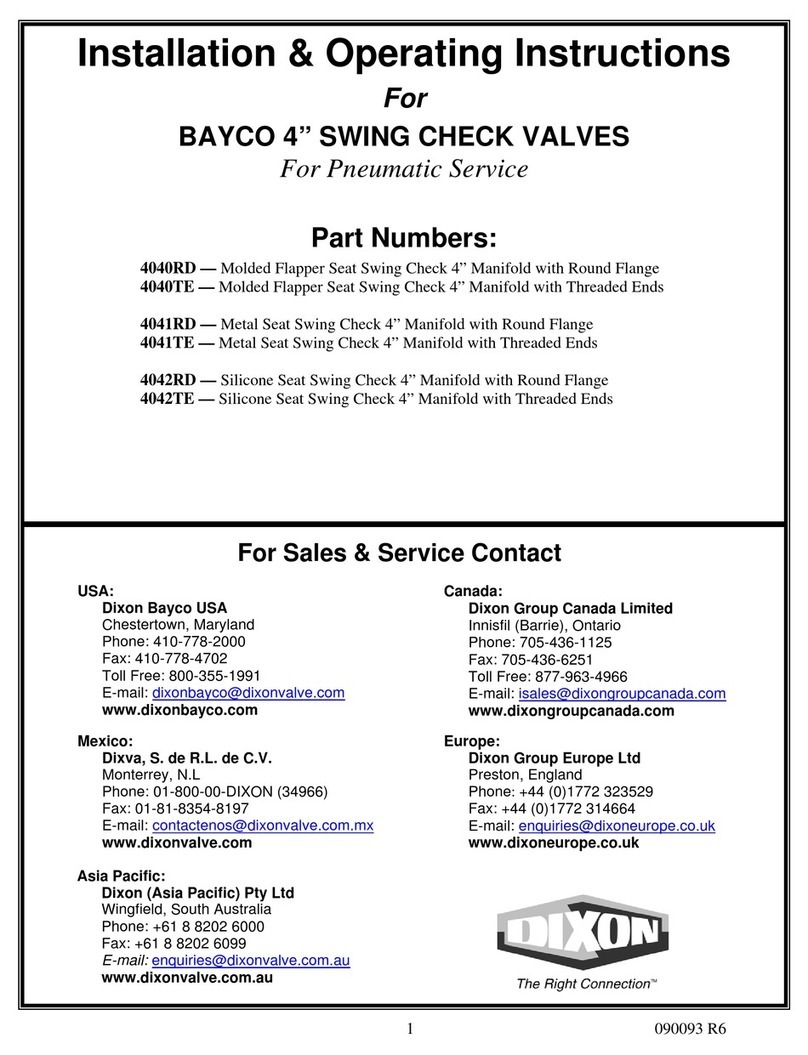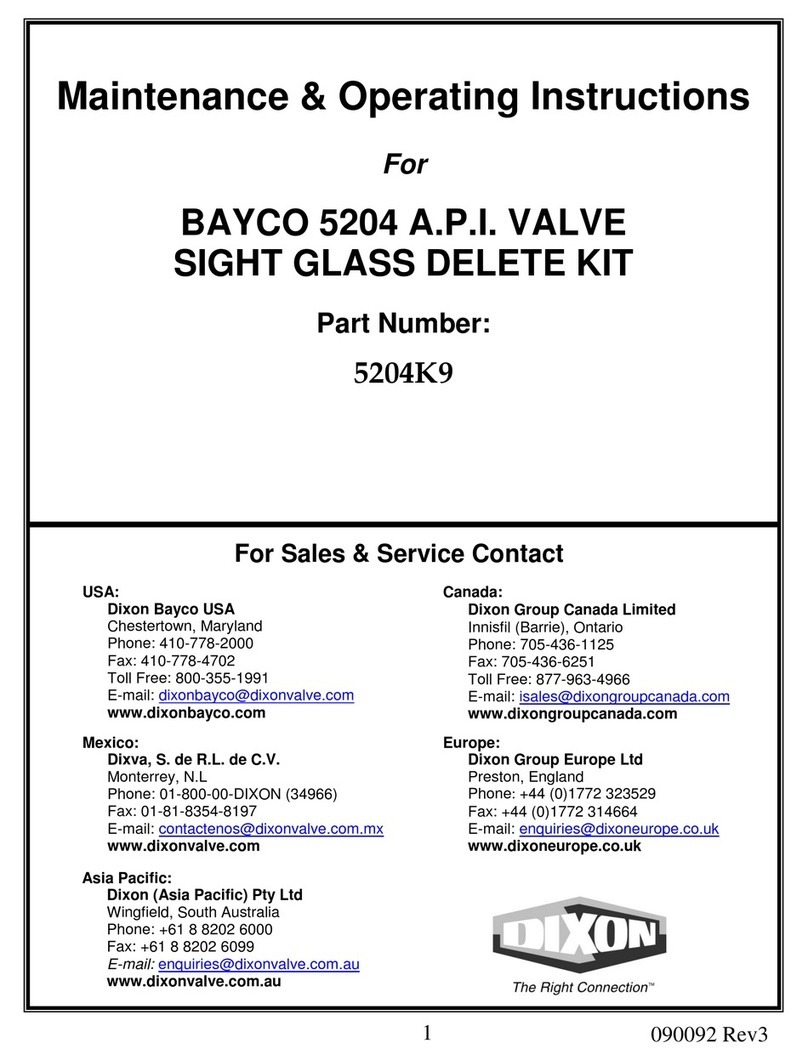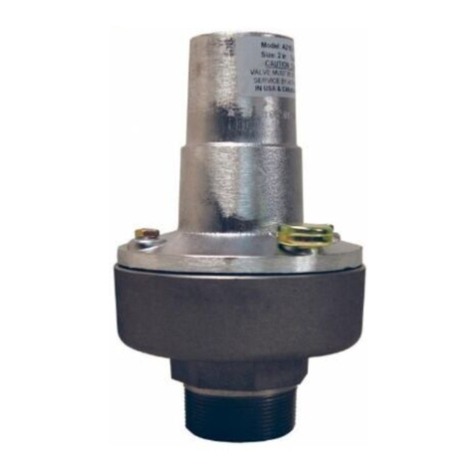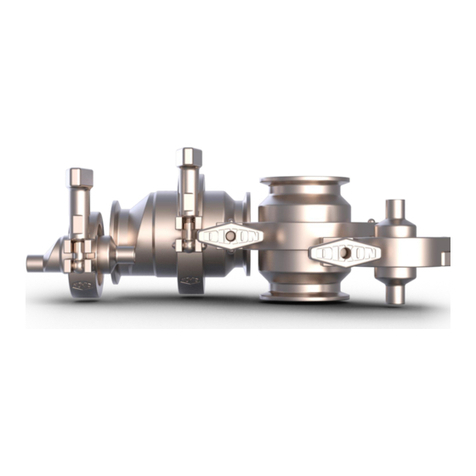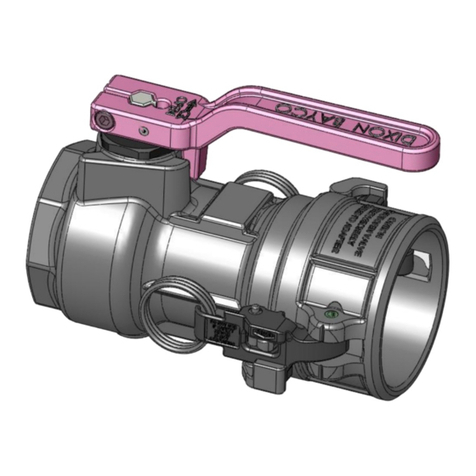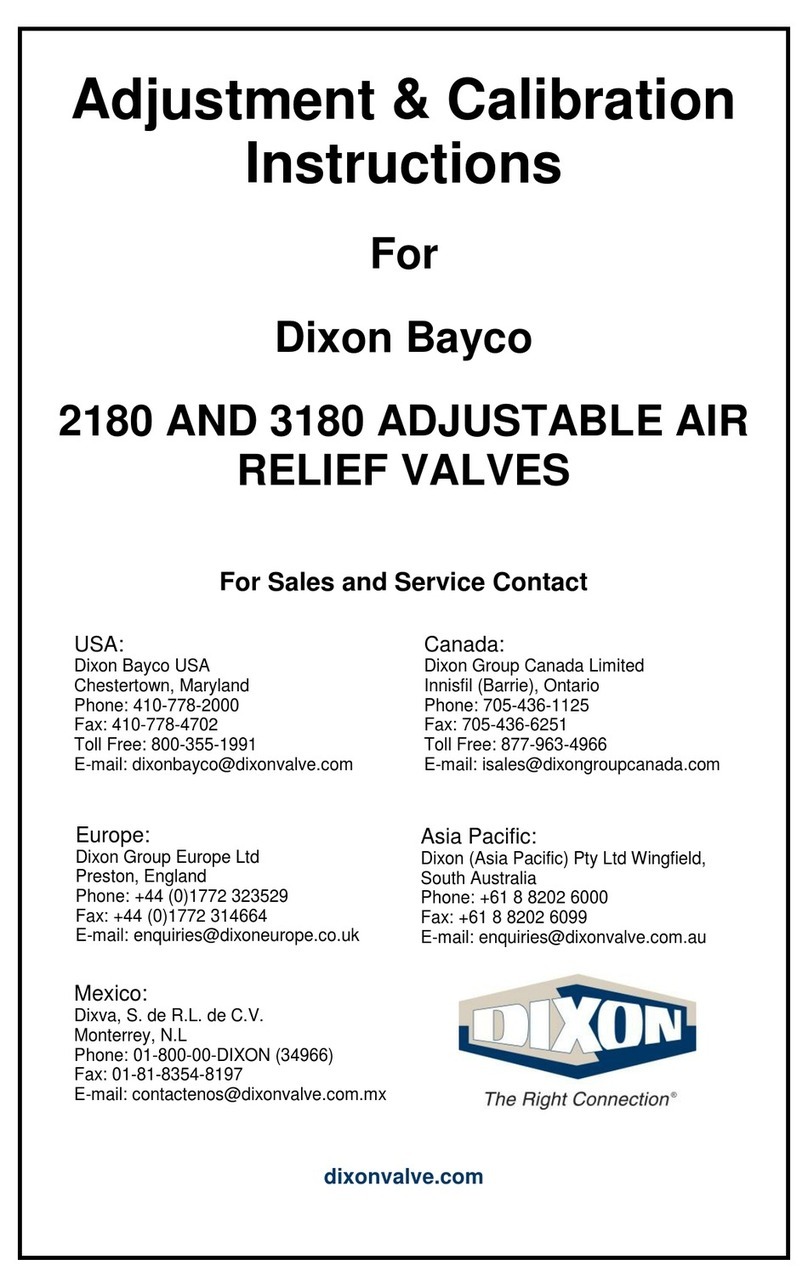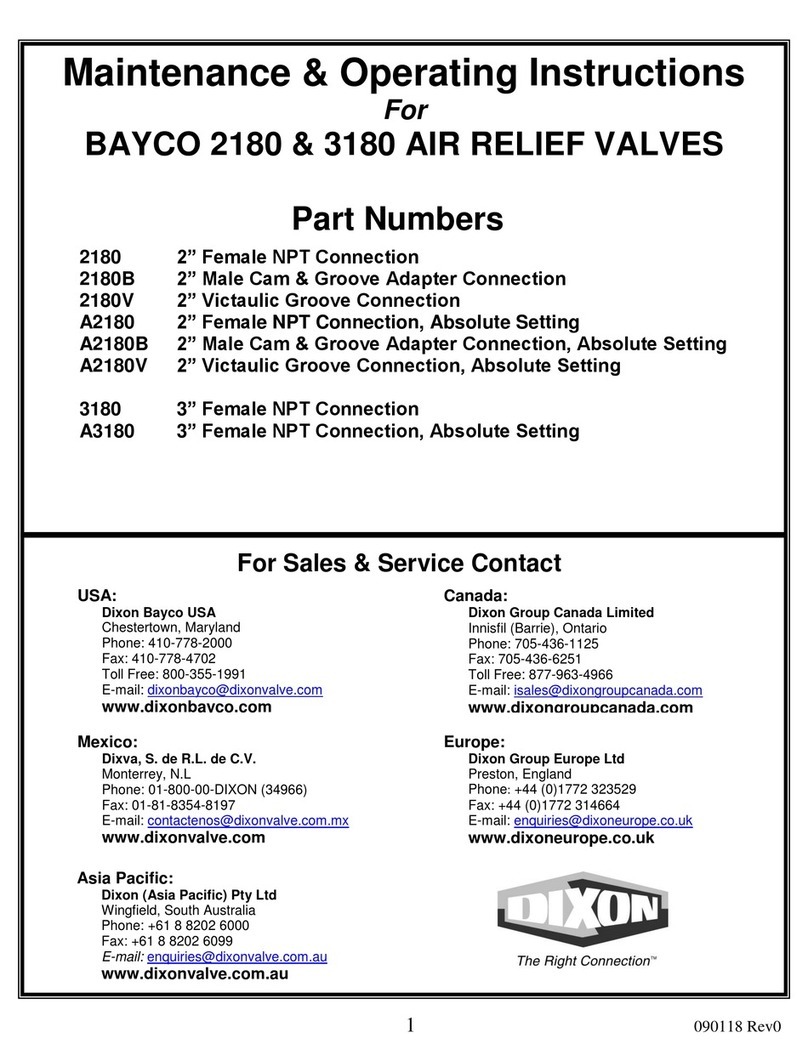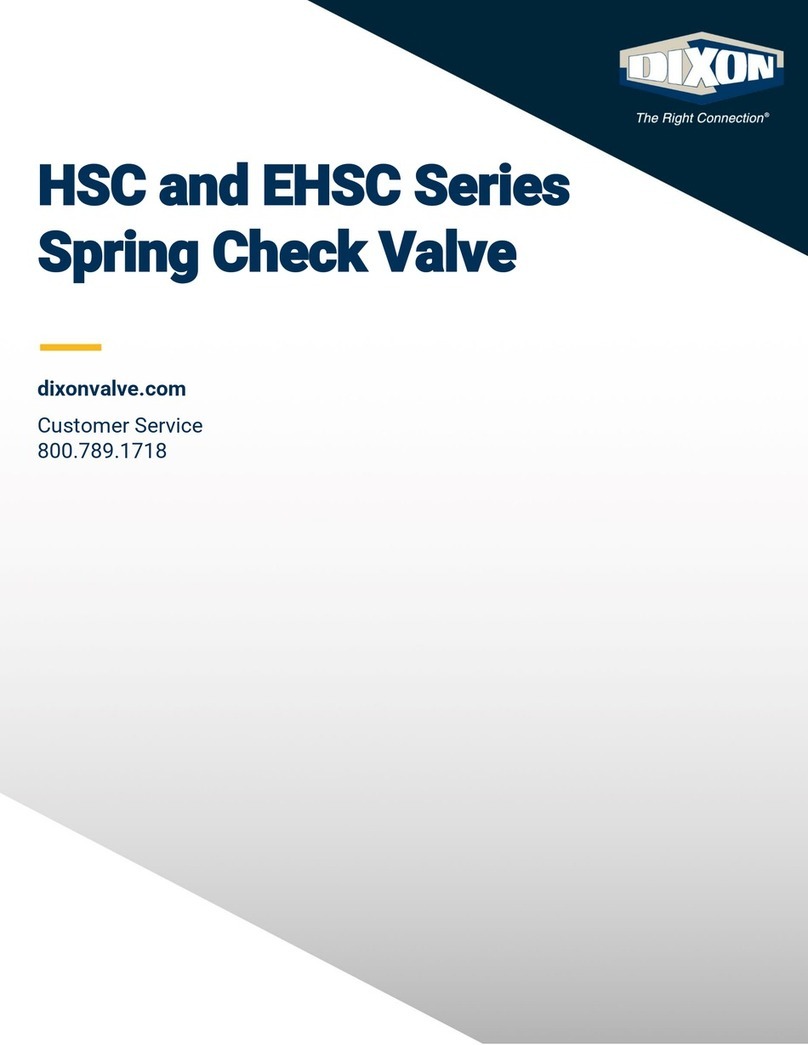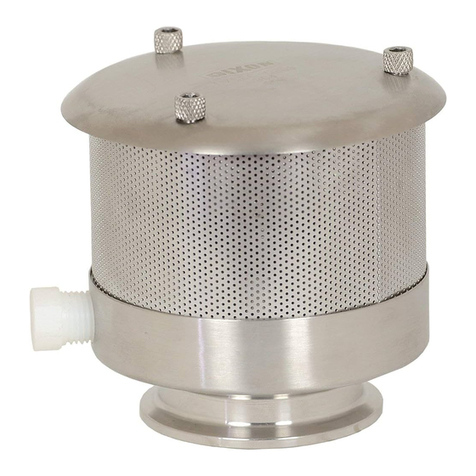
5BV3S | IOM dixonvalve.com • 800.789.1718
Care of Stainless Steel
The stainless steel components in Dixon®Sanitary equipment are machined, welded, and assembled by skilled craftsmen using
manufacturing methods that preserve the corrosion-resistant quality of the stainless steel. Retention of corrosion-resistant qualities
under processing conditions requires regular attention to the precautions listed below. Examples of corrosion that can result from
improper care are included below.
• Regularly check all electrical devices connected to the equipment for stray currents caused by improper grounding,
damaged insulation, or other defects. Corrosion: Pitting often occurs when stray currents encounter moist
stainless steel.
• Never leave rubber mats, ttings, wrenches, or other tools in contact with stainless steel. Corrosion: pitting or galvanic action.
Objects retard complete drying, preventing air from reforming the protective oxide lm. Galvanic corrosion occurs when two
dissimilar metals touch when wet.
• Immediately rinse equipment after use with warm water until the rinse water is clear. Clean the equipment (COP or CIP) as soon
as possible after rinsing. Corrosion: discoloration, deposits, and pitting. Product deposits often cause pitting beneath
the particles.
• Use only recommended cleaning compounds. Purchase chemicals from reputable and responsible chemical manufacturers
familiar with stainless steel processing equipment. Ensure they continuously check the effects of their products on
stainless steel.
• Use cleaning chemicals exactly as specied by the manufacturer. Do not use excessive concentrations, temperatures, or
exposure times. Corrosion: pitting, discoloration, or stress cracks. Permanent damage often occurs from excessive chemical
concentrations, temperatures, or exposure times.
• For manual cleaning, use only soft non-metallic brushes, sponges, or pads. Brush with the grain on polished surfaces to avoid
scratching the surface. Corrosion: pitting, scratches. Metal brushes or sponges will scratch the surface and promote corrosion over
a period of time. Metal particles allowed to remain on a stainless steel surface will cause pitting.
• Use chemical bactericides exactly as prescribed by the chemical manufacturer in concurrence with the local health authority.
Use the lowest permissible concentration, temperature, and exposure time possible. Flush immediately after bacterial treatment.
In no case should the solution be in contact with stainless steel for more than 20 minutes. Corrosion: protective lm destroyed.
Chlorine and other halogen bactericides can destroy the protective lm. A few degrees increase in temperature greatly increases
chemical activity and accelerates corrosion.
• Regularly inspect the joints in pipelines. Be sure all connections are tight tting without binding. Corrosion: crevice corrosion.
Small crevices caused by improperly seated gaskets will promote crevice corrosion. Stainless steel under stress will develop
stress cracking, especially in the presence of bactericides containing chlorine.
• Regularly inspect equipment for surface corrosion (i.e. pitting deposits, stress cracks, etc.). If deposit or color corrosion is
detected, remove it immediately using mild scouring powder and detergents. Rinse thoroughly and allow to air dry. Review
production and cleaning procedures to determine the cause. NOTE: If corrosion is not removed, the protective lm cannot be
restored, and corrosion will continue at an accelerated rate.

